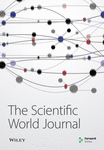Tissue Engineering of the Urinary Bladder: Current Concepts and Future Perspectives
Abstract
There are many conditions that can affect the normal structure of the urinary bladder wall and lead to the inadequate evacuation of urine or even disable urine excretion. In these cases, the essential task is to restore the function of the urinary bladder, most often through surgical intervention. Some of the disorders, such as bladder acontractility, bladder cancer, and inflammatory disease, represent a great challenge in practice due to the number of complications that can occur after the intervention and due to frequent relapses. The use of tissue engineering strategies that include the use of stem cells and artificially created scaffolds could give solutions for treatment of many disorders of the urinary bladder and transplantation therapies in the future. Although the research in this field is still in its infancy, there are some promising results that raise hope that the tissue engineering approach could offer long-term solutions for many issues in regenerative urology. This review summarizes the current achievements and perspectives in the use of stem cells and tissue engineering techniques in the field of urinary bladder regeneration.




